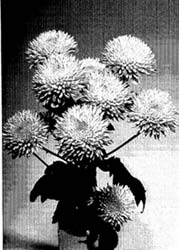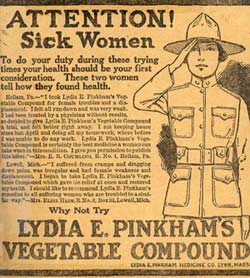Question from C. George:
Who gets the right to put “patent pending” on a product? Do they have to file a patent application first or what?
-C. George
The term “patent pending” may be used by a manufacturer to indicate that a patent for the product has been filed with the United States Patent and Trademark Office. This statement has no legal implication as the protection provided by a patent does not actually begin until the patent is granted. Basically, “patent pending” serves as a warning that duplicating the product could result in being liable for damages and possible legal action if and when a patent is issued.
Falsely using the term “patent pending” can result in a fine for deceiving the public. A fine of up to $500 can be sought for each usage of “patent pending” when no application has been filed.


 In 1930, the Plant Patent Act spurred by the work of Luther Burbank provided for the possibility of patent protection for asexually reproduced plants. In 1949, Plant Patent #1 was issued to Henry Bosenberg of New Brunswick, NJ, for a climbing rose. The United States Patent and Trademark Office grants a plant patent for any new or distinct variety of plant that is asexually reproduced except for a tuber propagated plant or a plant found in an uncultivated state. Asexual reproduction means that the plant must be able to reproduce by a method other than seeds such as budding, grafting or the rooting of the cuttings. The child plant therefore has the exact characteristics of the parent plant.
In 1930, the Plant Patent Act spurred by the work of Luther Burbank provided for the possibility of patent protection for asexually reproduced plants. In 1949, Plant Patent #1 was issued to Henry Bosenberg of New Brunswick, NJ, for a climbing rose. The United States Patent and Trademark Office grants a plant patent for any new or distinct variety of plant that is asexually reproduced except for a tuber propagated plant or a plant found in an uncultivated state. Asexual reproduction means that the plant must be able to reproduce by a method other than seeds such as budding, grafting or the rooting of the cuttings. The child plant therefore has the exact characteristics of the parent plant.  Patent Medicine is a term used to refer to concoctions popular in the 18th and 19th century which were advertised to cure almost every disease. Patent Medicine is actually an incorrect name though. Most of these products were trademarked but never patented. The process of patenting a product requires full disclosure of a medicine’s ingredients. Most manufacturers did not want to reveal the toxic or questionable ingredients of their so-called cures.
Patent Medicine is a term used to refer to concoctions popular in the 18th and 19th century which were advertised to cure almost every disease. Patent Medicine is actually an incorrect name though. Most of these products were trademarked but never patented. The process of patenting a product requires full disclosure of a medicine’s ingredients. Most manufacturers did not want to reveal the toxic or questionable ingredients of their so-called cures.